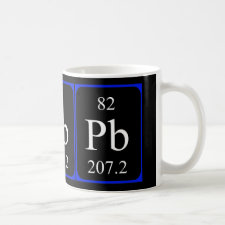
Authors: Li Y, Zhang J, Xu C, Zhou YF
Article Title: Crosslinked chitosan nanofiber mats fabricated by one-step electrospinning and ion-imprinting methods for metal ions adsorption.
Publication date: 2016
Journal: SCIENCE CHINA Chemistry
Volume: 59
Issue: (1)
Page numbers: 95-105.
DOI: 10.1007/s11426-015-5526-3
Abstract: The Pb(II) ion-imprinting electrospun crosslinked chitosan nanofiber mats were fabricated by one-step electrospinning and ion-imprinting methods and their application as adsorbents for metal ions was also investigated. The resulting chitosan nanofiber mats were characterized by scanning electron microscopy (SEM), Fourier transform infrared spectroscopy (FTIR), X-ray photoelectron spectroscopy (XPS) and thermal gravimetric analysis (TGA). The Pb(II) ion-imprinting electrospun crosslinked chitosan nanofiber mats were used as adsorbents for the removal of Pb(II) ions from aqueous or acid solutions. The effects of pH values, contact time, content of crosslinker (glutaraldehyde) on Pb(II) ions adsorption were studied. The results indicated that the Pb(II) ion-imprinting electrospun crosslinked chitosan nanofiber mats had the highest adsorption capacity of 110.0 mg/g at pH 7. The kinetic study demonstrated that the adsorption of Pb(II) ions followed the pseudo-second-order model. The equilibrium isotherm data showed that the Langmuir model was the most suitable for predicting the adsorption isotherm of the studied system. The Pb(II) ion-imprinting electrospun crosslinked chitosan nanofiber mats had good adsorption selectivity, which illustrates the equilibrium adsorption capacity in the order of Pb(II)>Cu(II)>Zn(II)>Cd(II)>Ni(II). The Pb(II) ionimprinting electrospun crosslinked chitosan nanofiber mats were stable and had good reuse ability
Template and target information: lead ion, Pb(II)
Author keywords: chitosan, one-step, electrospinning, Ion-imprinting, Pb(II) ion adsorption



Join the Society for Molecular Imprinting

New items RSS feed
Sign-up for e-mail updates:
Choose between receiving an occasional newsletter or more frequent e-mail alerts.
Click here to go to the sign-up page.
Is your name elemental or peptidic? Enter your name and find out by clicking either of the buttons below!
Other products you may like:
 MIPdatabase
MIPdatabase









